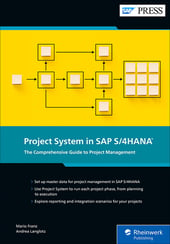Due to the pressure of implementing projects successfully within increasingly shorter periods and under continuously rising costs, project management methods and tools are becoming more important in the industry and in the public sector.
Projects range from smaller cost and investment projects, to development or plant maintenance projects, to large-scale projects in plant engineering, construction, and mechanical engineering.
Project management software products are available in abundance for project managers to use for support in planning and implementing their projects. Many companies also use programs they have developed by themselves for individual aspects of project planning and implementation; however, only a few project management tools can map the entire lifecycle of a project completely and uniformly. A lack of integration options frequently results in project data, such as cost information or time data, needing to be entered several times. Therefore, most project management tools suffer from inaccurate project data and restricted transparency of project-related information and documents.
To avoid these problems, companies that already use an SAP enterprise resource planning (ERP) system, such as an SAP R/3, SAP ERP, or SAP S/4HANA system, are now increasingly using Project System to manage their projects and therefore benefit from the close integration of Project System with accounting, materials management, sales, production, human resources, and so on. Further integrations, for example with Portfolio and Project Management (PPM) or Commercial Project Management (CPM) functionality in SAP S/4HANA, enhance Project System with functions for managing project portfolios or with extended cost and revenue planning options.
Compared to previous versions, Project System in SAP S/4HANA provides numerous innovations:
- Renewed functions such as project texts and process enhancements (e.g., Project Manufacturing Management and Optimization [PMMO]) complement and modernize the functional scope of Project System.
- Simplified, device-independent and role-based user interfaces improve the usability of the application and support mobile project teams.
- Documented, external programming interfaces—called application programming interfaces (APIs)—facilitate the extension of project management processes by SAP partners or company-specific developments and simplify the integration with cloud-based applications.
Because Project System offers functions for managing almost all types of projects (and often in different ways, depending on the requirements), most companies that use Project System only use a small portion of the available functions. Frequently, companies initially only use a few of the Project System tools (e.g., to control their project costs) and then gradually use other options.
Editor’s note: This post has been adapted from a section of the book Project System in SAP S/4HANA: The Comprehensive Guide to Project Management by Mario Franz and Andrea Langlotz.



Comments